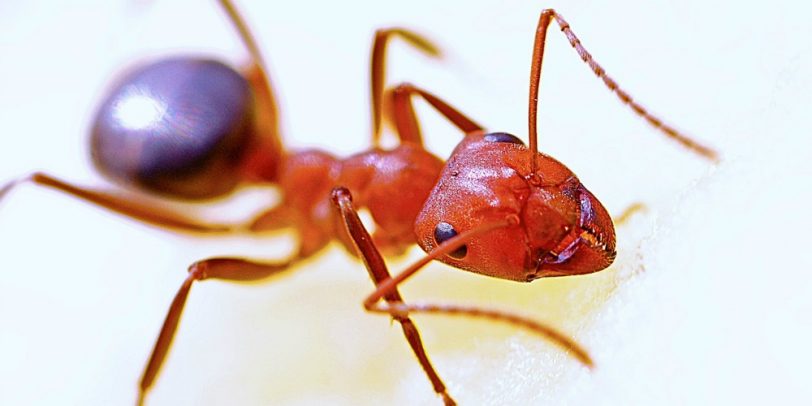Get an overview of the types of ants that may be taking up residence in your home. We've summarized the most common as destructive, aggressive, or nuisance ants.
Destructive Types of Ants
Carpenter Ants
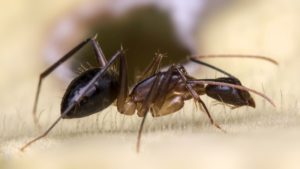 Next to termites, carpenter ants are one of the most destructive insects in the northwest.
Next to termites, carpenter ants are one of the most destructive insects in the northwest.
Although carpenter ants do not eat wood as termites do, they have powerful jaws and make tunnels in the wood structure of your home. Carpenter ant swarms portend damage to your home and property.
Carpenter ants are so destructive that some lenders require a pest inspection in real estate transactions. Traps and bait are typically not effective ant control methods for carpenter ants.
Moisture Ants
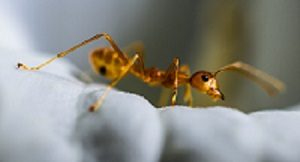 Moisture ants aren’t necessarily destructive on their own. They like to make nests inside damp or decaying wood. Therefore, moisture ants speed up the decaying process.
Moisture ants aren’t necessarily destructive on their own. They like to make nests inside damp or decaying wood. Therefore, moisture ants speed up the decaying process.
They may take up residence near leaks in plumbing systems, an attic or crawl space, or rotting wood in bathrooms or basements.
Moisture ants may also nest outdoors near windows or doors that provide easy access indoors to scout for food.
Aggressive Types of Ants
There are, unfortunately, aggressive ants that have a painful bite/sting. These ants aren’t just annoying, they are scary to have in your home. If there is one, there could be a lot more.
Fire Ants
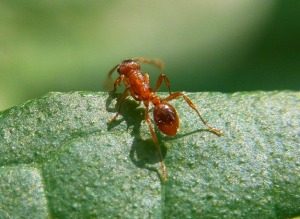 These evil red ants aren’t just a pest that can get inside your home and wreak havoc.
These evil red ants aren’t just a pest that can get inside your home and wreak havoc.
Even in your yard, they are scary to deal with.
Fire ants are incredibly aggressive, and they have a painful sting that feels like a burn.
Alleghany Mound Ants
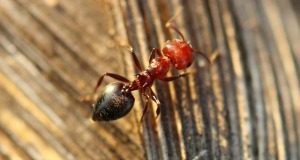 These aggressive ants build large mounds in the soil that serve as nests.
These aggressive ants build large mounds in the soil that serve as nests.
They will become combative in defending their nest and will bite to protect it.
Alleghany mound ants destroy vegetation within 40-50 feet of their nest to keep it in direct sunlight.
Acrobat Ants
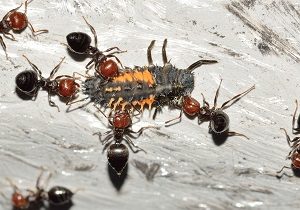 Acrobat ants have a heart-shaped abdomen which is why they are also known as Saint Valentine ants.
Acrobat ants have a heart-shaped abdomen which is why they are also known as Saint Valentine ants.
These ants will nest in insulation or woodwork inside your home or outdoors in soil or tree stumps.
They can be aggressive with a foul odor and painful sting.
Harvester Ants
 Although uncommon to find inside your home, harvester ants will build mounds in yards and near homes, requiring professional ant control.
Although uncommon to find inside your home, harvester ants will build mounds in yards and near homes, requiring professional ant control.
The vicious bite of a Harvester ant can leave painful sores or cause allergic reactions.
They are often mistaken as fire ants because of their reddish color.
Nuisance Types of Ants
Ants don’t have to be destructive to be an ongoing nuisance and concern. There are nearly 1,000 species of ants in the United States. Their skill in building large colonies and finding food inside your home can become exasperating for homeowners.
Argentine Ants
These tiny creatures love to invade homes in search of sweets and water. Argentine ants establish supercolonies that may have over a billion ants.
This is because Argentine ants have multiple queens – as many as 300 queens for every 1,000 workers.
Bigheaded Ants
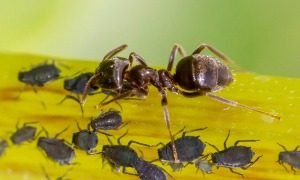 Named for their large heads, bigheaded ants are not naturally aggressive but may bite if disturbed.
Named for their large heads, bigheaded ants are not naturally aggressive but may bite if disturbed.
They are soil-dwellers, sometimes displacing lawns, landscaping, and gardens or foraging indoors in pantries or cellars.
Bigheaded ants also create super-colonies with multiple queens.
Citronella Ants
 These yellowish ants would most likely go unnoticed if it wasn’t for the swarmers (winged ants) who leave the nest to mate and start their own colonies.
These yellowish ants would most likely go unnoticed if it wasn’t for the swarmers (winged ants) who leave the nest to mate and start their own colonies.
While swarming, citronella ants will sometimes enter your home.
Field Ants
Field ants can vary in color, from a yellow to a red and sometimes red and black. They are very common to find outdoors but will go indoors to forage for food.
Field ants do not have stingers but will bite if they feel threatened. Some field ants spray formic acid into the wound, which can be very painful.
Ghost Ants
Ghost ants are tiny with a dark head and thorax and a pale abdomen.
They will sometimes build their nests inside your home inside walls, behind baseboards, or even in the soil of potted plants.
Ghost ants require a lot of water and are most commonly found in kitchens and bathrooms.
Odorous House Ants
Odorous house ants have multiple queens and multiple nesting sites making them hard to get rid of. They often build nests indoors near water and sweets.
Also known as sugar ants, they have a serious sweet tooth and are not shy about strolling your kitchen in search of treats day or night. They have a distinct blue cheese or coconut odor when crushed.
Pavement Ants
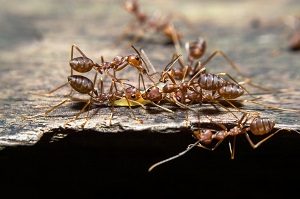
Brown to black in color, pavement ants can be found nesting in cracks in pavement such as sidewalks, driveways, or patios.
They love to forage inside for all the delicious food you have to offer.
If open food packaging, trash cans, crumbs or spills, or pet food is regularly available, pavements ants can become a serious problem.
Thief Ants
Thief ants will live anywhere and eat almost anything. They particularly enjoy greasy food like potato chips. They are known to steal food from other colonies, hence the name.
Once they get into your house it is hard to manage them because they are so tiny at only 1/16-inch long. No snacks are safe as thief ants can get into seemingly sealed or contained items.
Seattle, WA Ant Control | Portland, OR Ant Control
Are any of these ants in the house wreaking havoc in or around your home? Do you need help getting rid of ants nests?

